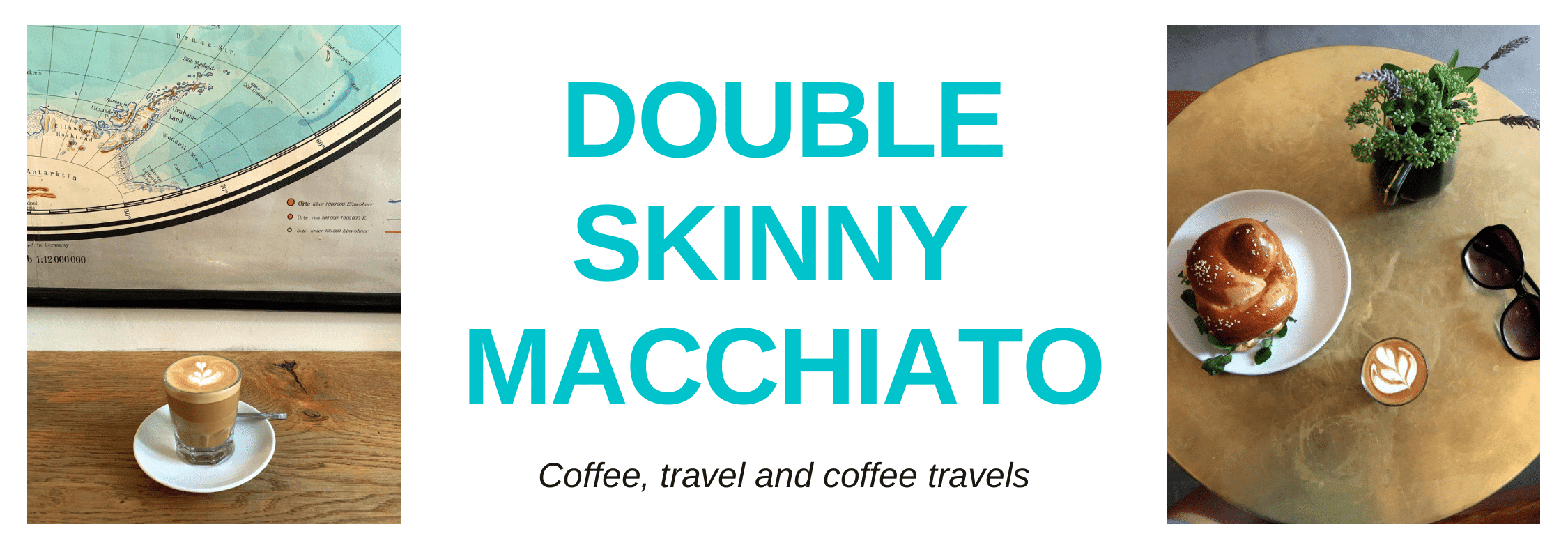And so this is Portland. I woke up relatively early on Saturday morning and went for a run along the Willamette River. There are several bridges in the downtown area so you can make your circuit as long or short as you like. Conveniently, a branch of the iconic Portland coffee chain, Stumptown, was located just a couple of blocks from my hotel, so I picked up a Rwandan Chemex coffee on my way back. I also stopped by another Portland institution — Voodoo Doughnut — for a doughnut not my smaller than my head, which involved chocolate, caramel and peanuts and was called Chuckles.
After I had showered and changed, I headed for the Oregon Historical Society, a museum with several galleries offering insights into different aspects of the state's history. There were also special exhibitions on propaganda and on Chinese immigrants to the United States. It cost $11 to get in and I spent just under an hour there.
A few blocks further south, the Portland Farmers Market was bustling with people. In the summer, there are several locations for the market, but in the winter, they just set up at the Portland State University campus on Saturdays. As well as the usual produce stalls, there were a few food trucks and although it was almost noon, I decided I could just about get away with some breakfast tacos ($5.50) from Enchanted Sun: chilli, scrambled eggs, potato and cheese, Just what the doctor ordered. I also picked up a Guatemalan pourover ($3) from Portland coffee roastery, Night Owl.
Then I wandered north again, back towards the heart of the downtown area. Portland's city centre is very small and very walkable, although MAX and the streetcars provide excellent public transport options too. As part of my efforts to visit as many of Portland's coffee bars as I can while I am here, I stopped at a couple more. First, a branch of Heart on SW 12th Avenue. The cafe was very light and airy with minimalist, monochrome décor. I ordered a macchiato ($3.50), which was excellent. It was also a good spot for people-watching.
My next coffee stop was Sterling Coffee Roasters on NW 21st Avenue in Nob Hill, a few blocks northwest of the downtown area. Sterling is tiny: its walls painted a vibrant violet and its tables covered with white tablecloths and decorated with pine cones. They don't do hand-brewed filter coffee so I had another macchiato (lactose sensitivity be damned!) and tried to pretend I wasn't listening to the screenplay critique that was taking place at the next table.
Nob Hill is a great area for eating out and for shopping, NW 23rd Avenue beings its main drag: Tender Loving Empire has great cards and design-oriented local-themed gifts; Marine Layer has nice, super-soft clothing basics; The Meadow sells chocolate, salt, bitters and flowers (because why not?); and if you are searching for artisan popcorn, look no further than Poplandia. Nearer the centre of town, around Burnside and Crouch between 9th and 13th Avenues, you can find stores like Madwell and Lululemon, as well as Portland's famous and huge Powell's City of Books, which should satisfy all of your reading needs.
I had noticed on my map that near my hotel in the Chinatown part of downtown, something called the Shanghai Tunnels, also known as Portland Underground. They turned out to be a series of tunnels and interconnected basements underneath various buildings in downtown. The Cascade Geographic Society arranges historical tours of the tunnels ($13), which you can book online. The society was responsible for the restoration of the tunnels, which took decades, and our guide was extremely knowledgeable. The tunnels have a dark past: they were used as a place to imprison victims of Shanghaiing — the kidnapping of transient people to serve as sailors — between 1850 and 1941, and white slaving. It was an interesting and eye-opening 90 minutes, although probably not one for the severely claustrophobic.
For dinner, I headed to Ken's Artisan Pizza in a district east of downtown called Kerns. There are plenty of public transport options but it only took me about 35 minutes to walk. Small as Portland's city centre is, hardly anyone does seem to walk. I also learnt from the Oregon Historical Society that only 7% of the population travel to work by bike — a much higher figure than the national average of 0.6%, but a lot lower than I expected for such a bike-centric community. After a short wait at Ken's, I took my seat at the bar and ordered a wood-fired prosciutto pizza ($15). It was huge and I couldn't quite finish it but it was really tasty with its puffy crust; the prosciutto covered the entire base in a super-thin layer. Nice one, Ken!
Because I hadn't had enough illuminations at Lumiere London, I decided to check out the Portland Winter Light Festival, a series of light installations along the eastern waterfront, around the Oregon Museum of Science and Industry. There were plenty of different works to see and although it was busy, it was a lot less chaotic than the hoards of Regent Street in London. There were a lot of families there and there was a relaxed, fun atmosphere. It was nice to finish the day with a little bit of (light) culture!






















No comments:
Post a Comment